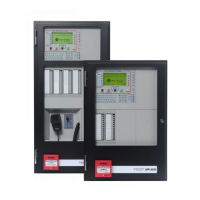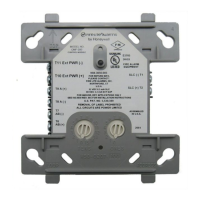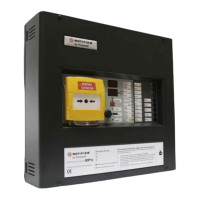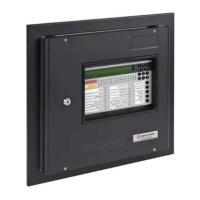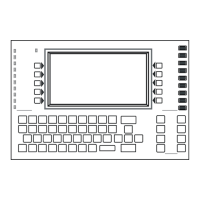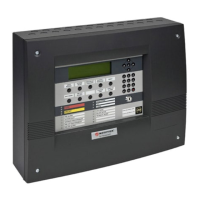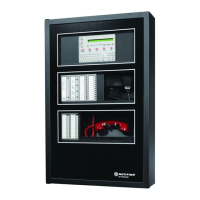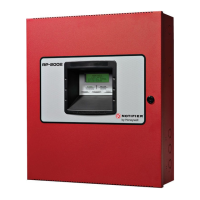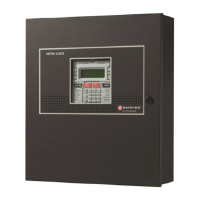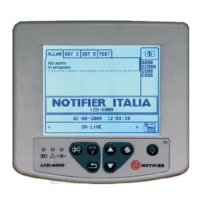Notifier SLC Wiring Manual — P/N 51253:U5 12/20/2017 37
NFPA Style B IDC Using Zone Interface Modules Monitor Modules
6.5 NFPA Style B IDC Using Zone Interface Modules
Connect the SLC wiring to the module terminals 1 (–) and 2 (+).
Each FZM-1 module takes one address on the SLC. Use the rotary switches on the module to set it to the required SLC address.
Figure 6.8 shows typical wiring for a supervised and power-limited NFPA Style B (Class B) IDC using the FZM-1 module.
Module installation notes:
1. The Initiating Device Circuit (IDC) is supervised and current-limited to 210 microamps @ 24 VDC (nominal).
2. The IDC provides the following services (do not mix):
• Fire alarm service
• Automatic and manual waterflow alarm service with normally open contact devices
• Sprinkler supervisory service with normally open contact devices
• Security service
3. Refer to the Device Compatibility Document for compatible smoke detectors.
SLC-
24 VDC
Four-wire
Detector Base
Heat
detector
SLC
FMM-1
IDC
24 VDC Power
Filtered, Regulated,
Resettable
From
Supply
To Next IDC
or
Supervision Device
Manual pull
station
Figure 6.7 Typical Style D IDC Wiring with FMM-1

